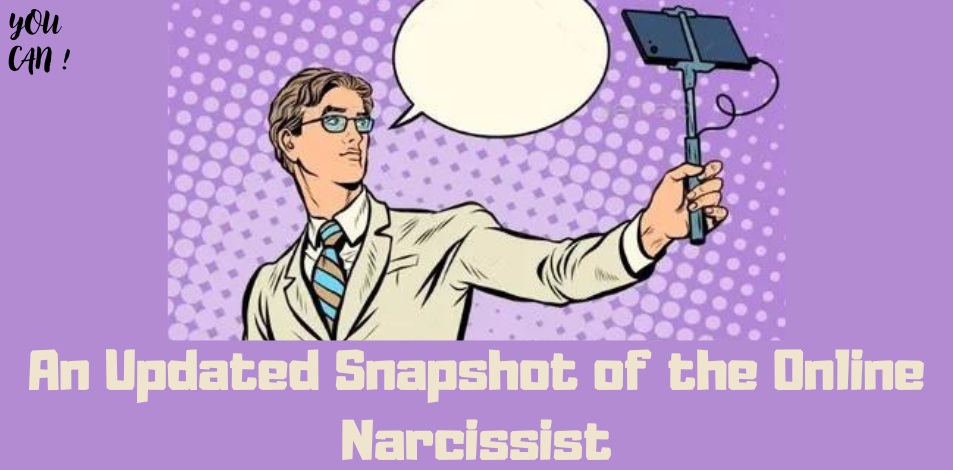
We’ve all dealt with narcissists at one time or another, but we usually have the option to walk away if they become too annoying. Usually.
The rise of social media platforms like Facebook, Twitter, and Instagram has provided greater opportunities to stay connected with people around the world. Unfortunately, narcissists have quickly discovered how useful social media can be for sharing words and images with countless people around the world. A new analysis explores how narcissists, compared to the general population, use social media.
Before we look at what this research has found, perhaps we should start with some background. Narcissism is commonly defined as “extreme selfishness, a desire for gratification from oneself or others, and an exaggerated admiration for one’s own qualities.” It was first introduced by Freud in his 1914 essay on narcissism, and has since become a favorite topic for researchers and therapists. It has also been included in various versions of the Diagnostic and Statistical Manual (usually under the term Narcissistic Personality Disorder) and is seen as part of the Dark Triad of personality traits along with psychopathy and Machiavellianism.
While there are different ways to classify narcissists, two categories of narcissism that have become an important part of research are:
Grandiose Narcissism – These narcissists are typically characterized by an extreme confidence in their superiority. These narcissists are prone to lashing out in vengeful rages against anyone who dares to criticize them. They have no sense of shame and often grow up knowing that they are superior to everyone else. As adults, they may have multiple relationships and are often proud of the admiration of those around them. They can also be extremely aggressive in establishing dominance over others.
Vulnerable Narcissism – People with vulnerable narcissism tend to be more emotionally sensitive (often to the point of neurosis). They feel distressed whenever they don’t get the treatment they feel they deserve and often struggle with fears of rejection or abandonment. In a real sense, vulnerable narcissists are compensating for low self-esteem or a history of neglect that can go back to early childhood. They can often shift from feeling superior to feeling inferior depending on how their lives are going at any given time.
Related : 7 Ways to Set Boundaries With Narcissists
For reasons that remain unclear, narcissism appears to be on the rise in modern society. A recent book by Jean M. Twenge and W. Keith Campbell argues that the United States, among other countries, is experiencing an epidemic of narcissism. Along with reality TV shows like The Real Housewives and My Super Sweet Sixteen, we are seeing a proliferation of media stars who derive their fame solely from their lavish lifestyles. Then there is the role that social media platforms like Facebook, Twitter, and Instagram can play in allowing people to broadcast information about themselves to a global audience, not to mention allowing them to solicit positive feedback in the form of “likes” in the process.
The way people prefer to use social media seems to depend on the type of needs being met. For example, while everyone enjoys posting selfies, narcissists seem to prefer to take it to the extreme, often to the point of posting inappropriate selfies to show off their fitness or physical attractiveness or to show how great their life is. Narcissists also prefer to post under their own name to ensure they get full credit for their posts (unless they need to attack people who have wronged them, anonymous posting on Twitter or 4chan is helpful).
To better understand how narcissists use social media, Campbell and Jessica McKean of the University of Georgia reviewed more than 62 research studies examining grandiose and vulnerable narcissism and how it might relate to online activity. Their research, recently published in the journal Psychology of Popular Media Culture , gathered data from more than 13,000 participants in the various studies they examined.
All participants completed one or more personality tests designed to measure different aspects of narcissism and, in some cases, related traits such as psychopathy and Machiavellianism. To measure social media use, four main criteria were used: time spent on social media, frequency of status updates, number of friends or followers, and selfies/selfies uploaded. The researchers also collected data on age, region where the participant lived, and social media sites used.
What they found was a small but significant association between overall social media use and grandiose narcissism (but not vulnerable narcissism). People who scored high on grandiose narcissism appeared to have more friends, posted status updates more frequently, and posted more photos of themselves than non-narcissists. This relationship seemed to fluctuate across cultures (the association between social media use and narcissism seemed to be particularly strong among Russian users for some reason) but no real difference was found in terms of preferred platform or user age.
Related : Are Narcissists Everywhere? In a Word…YES!
In discussing their findings, Campbell and Jessica McKean suggest that narcissistic individuals may be particularly drawn to social media as a means of soliciting compliments and other positive feedback that can affirm their views about themselves. Also, since online relationships tend to encourage broad but shallow networks, they fit the type of relationships that narcissists often prefer.
Unfortunately, these findings tend to be limited by the cross-sectional designs of the studies studied. This means that there’s no way to determine whether narcissists are naturally drawn to social media or whether the nature of social media can make users more narcissistic (it’s probably a combination of the two).
While more research is urgently needed, and this research doesn’t mean that everyone who spends time on social media (myself included) has NPD, it does illustrate why social media use may be particularly appealing to people with narcissistic tendencies.
So, think about that new selfie you’re planning to post. What kind of message are you really sending?




